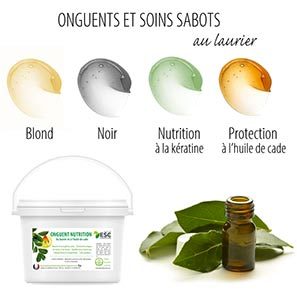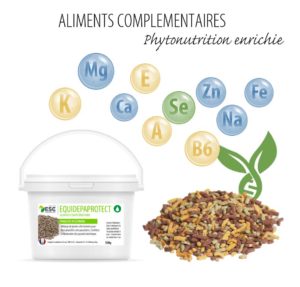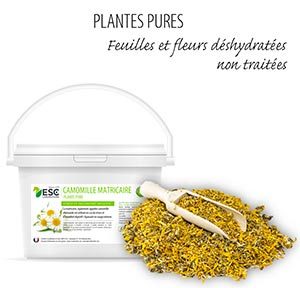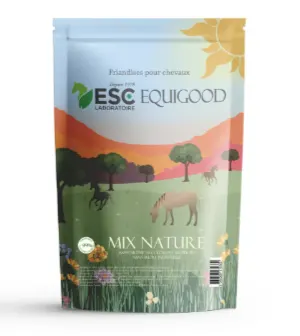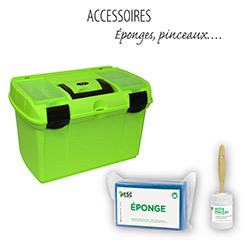Often associated with lameness or simple pain, the congestion of the tendons of the horse is nevertheless a affection that should not be taken lightly. It must even make you immediately suspend any work session.
Having multiple origins, this swelling of the limbs (posterior and/or anterior) of the horse requires appropriate care. ECS laboratories explain how to recognize horse congestion, and how to prevent it.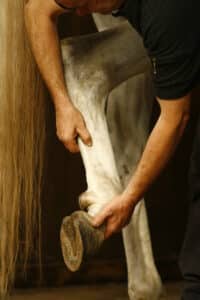
What is the congestion of tendons in horses?
The horse tendons are spoken of as being congested because of the synovial fluid (also called lymph) which will accumulate. Loaded in white blood cells, cells and lymphocytes, la lymph plays an essential role in the immune defenses of the horse. In particular, it allows cells to get rid of waste and to throat themselves with nutrients.
But when this fluid accumulates, it can form swelling, or edema. It's easy to recognize, because the reliefs of the tendons, which are usually visible, are no longer palpable. To have a clear heart, for example, it will be enough to compare them with other limbs or with another horse.
Generally, the congestion will be located at the level of your horse's tendons, balls, or shanks. This is simply due to gravity, congestion in the lower part of the body the horse when he is standing.
The congestion of the horse can be benign, but also more serious. It is therefore essential that you be very attentive and treat it as quickly as possible. To treat it, however, you must first understand the cause.
What are the main causes of tendon congestion?
Several phenomena can explain the formation of a congestion in your horse's tendons. It may follow a venous return or an inflammatory reaction. Knowing the cause of edema will allow you to better treat it, and possibly prevent it from re-forming.
A venous return defect
Most often, the congestion of the tendons of a horse is due to a venous return defect. This is particularly the case for horses who remain locked in their boxes for several days. No movement Indeed, it will cause stagnation of blood in its hooves. This is a little what happens in humans, especially women, with heavy leg syndrome.
The congestion can also follow weakened immune defenses due to a virus. It will then touch the two posteriors and the swelling will most often be symmetrical, at the level of the paturon, the ball, and even sometimes until mid cannon.
This type of tendon congestion does not cause lameness or real pain. It will disappear even after a few minutes of walking (at the pace).
A shock
The congestion of the horse tendons caused by a shock will be more localized. We can even talk about hematoma. In the days that follow, it can spread and descend along the legs, ce will make it more difficult to differentiate it from another type of congestion. Only one member will be affected and you can sometimes observe a suros or a small wound. Neither will the lameness be systematic.
An infection (or lymphangitis)
Inflammation of infectious origin may also cause edema. Infection of the tissues under the skin will result in swelling, which will be painful to the touch. We talk about lymphangitis when the congestion concerns the whole cannon.
This type of tendon congestion is recognized to form small craws under the skin. It sometimes causes a lameness, especially if the edema goes up to the top of the limb. Lymphangitis may also accompany fever. In this case it will have to be taken care of quickly by a veterinarian to avoid sequelae.
Inflammation of the tendons or ball
Congestion due to inflammation of the tendons or the ball is of greatest concern. They follow a tendinitis or sprain and take the shape of a diffuse oedema, touching the cannon or the ball.
It is almost systematically associated with a lameness, which can last for several days. Even if the edema will tend to resorb, a deformation may remain clearly visible at the tendon or inflamed joint.
How do I treat the horse's congestion?
The first thing to do when you observe a congestion in your horse is to make it walk (by hand or paddock) if it is due to poor venous circulation. Conversely, if it follows a tendinitis, put it to rest.
Generally speaking, if your horse can, It is strongly recommended not to have him work. On the other hand, you can make him trotter on a few strides, especially to evaluate his locomotion.
Whatever the cause of congestion, dlocal care must be applied to help absorb and avoid sequelae.
Cold shower
Cold shower is the best way to boost blood circulation. Orient the water well from bottom to top. You can even apply a cold source (e.g. in a pocket or gaiter form) directly on the area concerned. This will help to revive the circulation of lymphatic vessels as well as small blood capillary vessels.
Rest groups
This solution is also very effective in reducing swelling. However, it requires proper control of the laying of rest strips, after soaking them with an astringent product. Also change them regularly (at least twice a day).
Clay
The clay, when it is mixed with a little water to form a kind of paste, will make an excellent cataplasm to cure the congestion of the horse. In particular, it helps to reduce edema. Again, it is important to renew the operation several times (as soon as the clay is dry).
ESC laboratories developed very fine clay powder, and therefore more easy to model and apply. Coming from French green clay deposits located at the foot of the Auvergne volcanoes, its unique structure composed of 3 complementary clays gives it unique virtues.
This is how she high absorption and adsorption which allows it to throat the nutrients contained in the soil. Its natural composition is therefore particularly suited to reduce the risk of congestion of tendons after exercise.
Draining plants to prevent tendon congestion
Herbal therapy can also be an excellent solution of course against tendon congestion. Turn to draining plants, such as artichoke, dandelion or chrysantellum, which are known for its benefits on blood circulation.
Lymphanmix, our mixture of 8 plants selected for their draining properties, is thus a powerful remedy to cure and prevent the congestion of the tendons of horses. Administered orally, it is an excellent complement of clay to deburg the tendons and tighten the tissues.
When should I call a veterinarian?
In general, tendinitis is not considered a veterinary emergency. In addition, the ultrasound will allow a diagnosis will be more reliable a few days after appearance first symptoms. However, if your horse has fever, rapid intervention is absolutely necessary.
How to preserve the tendons of his horse?
Prevention is better than cure. You can indeed protect your horse's tendons and prevent the appearance of tendinous lesions by taking certain precautions.
Consider, for example, using restraint systems and protecting tendons with working strips or gaiters. In addition, it is recommended that: properly and regularly trim your horse's feet.
Also check its tendons after each exit to quickly detect abnormal heat, or swelling. You can also practice post-exercise treatment to improve blood drainage and reduce the risk of congestion.
Finally think about well adapt its diet and regularly water your horse. Avoid too tight bandages and adapt its appearance to the floor covering (no galloping on bitumen or too dry soil, for example).



